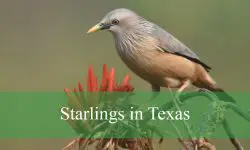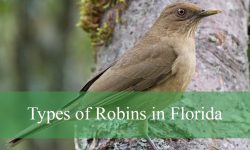Few birds are as iconic and striking as cardinals. With their vibrant colors, clear songs, and presence in both rural and urban settings, they capture the attention of birdwatchers and casual nature lovers alike. Kansas, with its mix of woodlands, grasslands, and open fields, provides excellent habitats for several cardinal family members.
While the Northern Cardinal is the only true cardinal found year-round in Kansas, the state also welcomes a range of its close relatives from the Cardinalidae family, including tanagers and buntings. These birds share similar characteristics—brilliant plumage, melodic calls, and strong seed-cracking bills—that link them to the cardinal group.
In this guide, you’ll discover the most notable types of cardinals and cardinal relatives in Kansas. We’ll explore their features, habitats, and behaviors so you can identify them more easily during your next birdwatching trip.
Types of Cardinals in Kansas
Northern Cardinal (Cardinalis cardinalis)
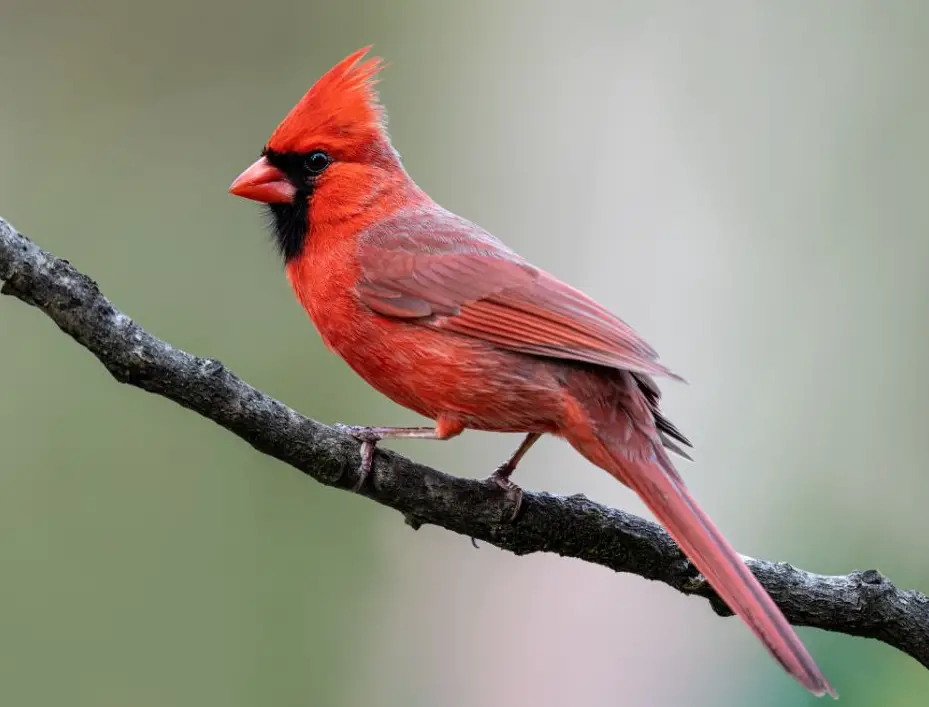
The Northern Cardinal is one of the most recognizable birds in North America and the only true cardinal that is a permanent resident of Kansas. Males are famous for their vivid crimson feathers, black facial mask, and prominent crest, while females sport a warm brown body with red tinges on the wings and tail. Both sexes share the same conical, orange-red bill, which is perfectly shaped for cracking seeds.
This bird is highly adaptable, thriving in woodlands, backyards, parks, and shrubby areas. In Kansas, you can spot Northern Cardinals year-round, often perched on low branches or feeding near the ground. Their presence brightens winter landscapes when most other birds are duller in color. Because they do not migrate, they are a familiar sight throughout all seasons.
Northern Cardinals are also well known for their songs. Both males and females sing, producing a series of whistled phrases such as “cheer, cheer, cheer” or “birdy, birdy, birdy.” Their strong vocalizations play an important role in marking territory and communicating between mates. During spring, males are especially vocal as they defend nesting sites.
In Kansas, the Northern Cardinal is a common visitor at backyard feeders. They are particularly attracted to sunflower seeds, safflower, and cracked corn. Providing dense shrubs or thickets in your yard can also encourage nesting, as these birds prefer sheltered areas for raising their young.
Pyrrhuloxia (Cardinalis sinuatus)

The Pyrrhuloxia, often referred to as the “desert cardinal,” is a close relative of the Northern Cardinal. While it is most common in the desert regions of the American Southwest, it occasionally strays into southwestern Kansas. Its name comes from the Greek words for “flame-colored” and “curved,” describing its red highlights and unique, parrot-like bill.
Unlike the all-red Northern Cardinal, the Pyrrhuloxia has a gray body accented with patches of crimson on its crest, face, wings, and tail. The stout, yellowish bill is particularly distinctive, helping birdwatchers separate it from the Northern Cardinal at a glance. Its crest is tall and pointed, giving the bird a striking profile against desert shrubs or mesquite trees.
Behaviorally, Pyrrhuloxias share much with their northern cousins. They are primarily seed eaters but also consume insects during breeding season. They are social birds, often forming flocks in winter, which makes them easier to spot in open scrubby habitats. Their song resembles the Northern Cardinal’s, but it is softer and more metallic in tone.
In Kansas, sightings of Pyrrhuloxia are rare and usually limited to areas close to the Oklahoma or Texas border. Birdwatchers who want to increase their chances of spotting one should explore arid or semi-arid habitats with thorny vegetation. Because of their limited range in Kansas, spotting a Pyrrhuloxia is considered a special treat.
Summer Tanager (Piranga rubra)
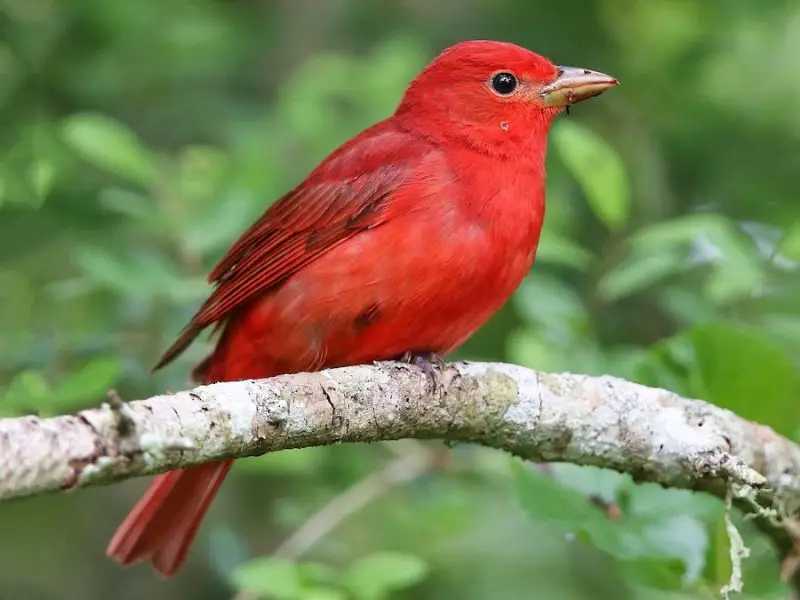
The Summer Tanager is another striking member of the cardinal family that visits Kansas during the warmer months. Males are entirely bright red, lacking the black mask seen in Northern Cardinals, while females and immature birds are yellow to yellow-green. This species is unique among North American birds for being the only one that is completely red from head to tail.
These birds prefer open woodlands, especially areas with oak and pine, but in Kansas, they are often found in riparian zones and forest edges. They are insect specialists, particularly known for eating bees and wasps. Summer Tanagers catch these insects mid-air and skillfully remove stingers before consumption, a behavior that fascinates birdwatchers.
In addition to insects, they also feed on fruits and berries during late summer. Their song is a series of melodic phrases often described as “robin-like but slower and sweeter.” This makes them easier to detect even if they are hidden in dense foliage.
In Kansas, Summer Tanagers migrate northward in spring and spend the breeding season across the state. They begin heading south again in late summer, traveling to Central and South America for the winter. Backyard birders may attract them with fruit feeders or by planting berry-producing shrubs.
Scarlet Tanager (Piranga olivacea)
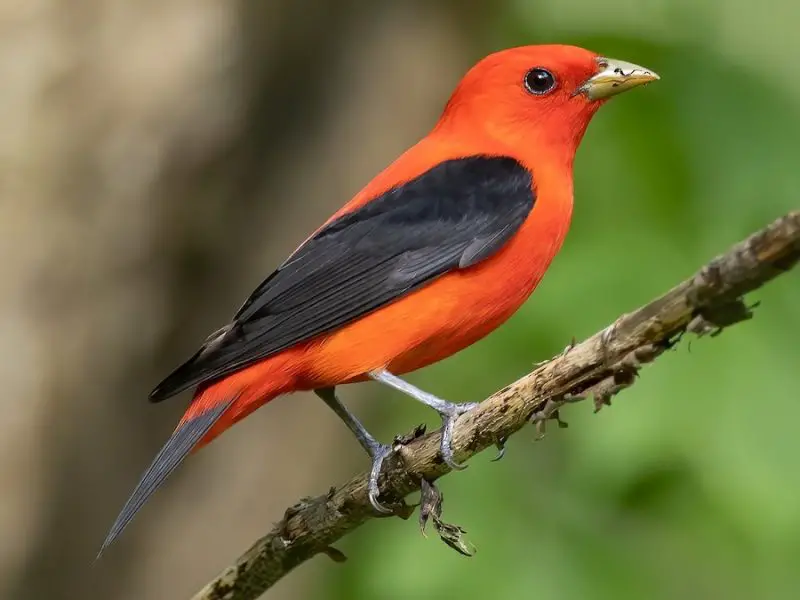
The Scarlet Tanager is a spectacular bird that passes through Kansas during migration. Males are unmistakable, with brilliant red bodies contrasted by jet-black wings and tails. Females and juveniles, however, are olive-yellow, making them harder to identify without the help of field guides or careful observation.
This species prefers mature deciduous forests, especially those with tall oaks and maples. During migration in Kansas, they are most likely to be spotted in eastern woodlands and parks. They are insectivorous during the breeding season, catching caterpillars, beetles, and flying insects. Later in the year, they also consume wild fruits and berries.
Scarlet Tanagers are more secretive than their close relatives, often staying high in the forest canopy. Their song resembles a robin’s but with a hoarser, more burry quality. Their call note, described as a sharp “chip-burr,” is another clue for identification when the birds are hidden among leaves.
In Kansas, Scarlet Tanagers are considered uncommon migrants, so sightings are cherished by bird enthusiasts. The best time to observe them is during spring and fall migration when they travel between South America and their northern breeding grounds. Conservation of large forest tracts is crucial for supporting this species along its migration routes.
Indigo Bunting (Passerina cyanea)
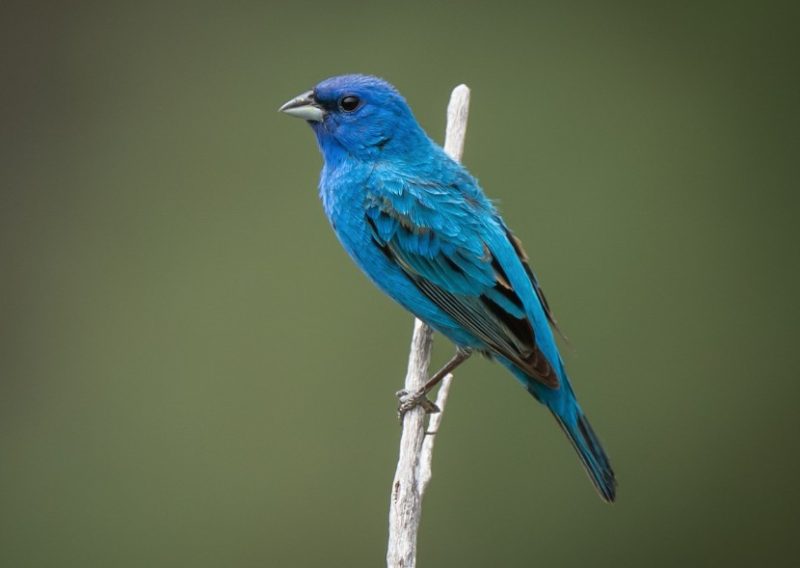
The Indigo Bunting is one of Kansas’s most beautiful summer residents, with males shining in deep blue plumage that glows differently under various lighting. Females and juveniles are brown with faint streaks, making them more inconspicuous compared to their dazzling male counterparts.
This species prefers shrubby areas, old fields, woodland edges, and roadsides. In Kansas, Indigo Buntings are widespread in summer, arriving in late April and departing by early fall. Their preferred habitats often overlap with those of Northern Cardinals, making them frequent neighbors.
Indigo Buntings are primarily seed eaters, but they also consume insects during the breeding season. What makes them fascinating is their navigation ability—these birds migrate at night and use the stars as guides. This remarkable behavior has been confirmed through scientific studies, making them an important species in ornithology.
Their song is a cheerful series of paired notes, often repeated in a pattern like “sweet-sweet, where-where, see-it, see-it.” Male Indigo Buntings frequently sing from exposed perches, making them easier to spot in summer landscapes across Kansas.
Painted Bunting (Passerina ciris)

The Painted Bunting is perhaps the most colorful bird in North America and a summer visitor in southern Kansas. Males are true showstoppers, with blue heads, green backs, and bright red underparts. Females and juveniles are entirely greenish-yellow, blending well with foliage.
In Kansas, Painted Buntings favor brushy habitats, woodland edges, and thickets, especially in the southern parts of the state. They are more localized than Indigo Buntings but are steadily gaining attention from birdwatchers who travel specifically to see them.
These buntings feed on seeds, insects, and berries, often foraging low in shrubs or on the ground. Their song is a series of sweet, high-pitched notes delivered from exposed perches. Despite their bright colors, Painted Buntings can be shy and secretive, often staying hidden within dense vegetation.
Painted Buntings migrate to Central America and the Caribbean during winter. In Kansas, they are typically present from May through September. Conservation efforts are important for this species since habitat loss and trapping have reduced populations in some regions. Bird-friendly yards with native plants can help provide food and shelter for these stunning birds.
How to Identify Cardinals and Their Relatives in Kansas
Identifying cardinals and their relatives in Kansas requires attention to both plumage and behavior. While the Northern Cardinal is unmistakable with its crest and red coloration, relatives such as buntings and tanagers display a range of colors from blue to scarlet. Females and juveniles often look quite different, requiring careful observation.
Another useful identification tool is listening to their songs. Cardinals have clear whistles, tanagers produce melodic and robin-like phrases, while buntings deliver high-pitched repetitive notes. Feeding habits also differ—Northern Cardinals are frequent feeder visitors, while tanagers and buntings prefer more natural foraging in shrubs, trees, and fields.
Best Time and Place to See Cardinals in Kansas
The best time to see cardinals and their relatives in Kansas depends on the species. Northern Cardinals can be seen year-round, especially at backyard feeders. Summer visitors like tanagers and buntings arrive in late spring and stay through early fall, making May to August the prime months for spotting them.
Woodlands, riparian zones, shrubby edges, and grasslands provide the best opportunities for observation. Eastern Kansas, with its more forested landscapes, offers greater chances for Scarlet and Summer Tanagers, while southern Kansas is the hotspot for Painted Buntings. Keeping an eye out during migration seasons can also bring delightful surprises.
FAQs about Cardinals in Kansas
How many types of cardinals live in Kansas?
Kansas has one true cardinal, the Northern Cardinal, but several relatives from the Cardinalidae family also occur, including tanagers and buntings.
Are Painted Buntings common in Kansas?
Painted Buntings are not widespread across Kansas but can be found in the southern regions during summer. Their brilliant colors make them a prized sighting.
Do cardinals stay in Kansas year-round?
Yes. The Northern Cardinal is a permanent resident in Kansas. Other relatives, such as Indigo Buntings and Summer Tanagers, are migratory and only present in warm months.
What do cardinals eat in Kansas?
Cardinals and their relatives eat a variety of foods, including seeds, berries, and insects. Northern Cardinals are frequent feeder visitors, while buntings and tanagers often forage naturally.
Can Pyrrhuloxia be seen in Kansas?
Pyrrhuloxia is primarily a desert species but can occasionally appear in southwestern Kansas, near the Oklahoma or Texas border. Sightings are rare but possible.
Conclusion
Kansas is home to more than just the familiar Northern Cardinal. With its variety of habitats, the state also hosts a colorful lineup of relatives from the cardinal family, including buntings and tanagers. Each species brings its own unique charm, from the all-red Summer Tanager to the rainbow-like Painted Bunting.
Birdwatchers in Kansas have the opportunity to see these stunning species throughout the year, with spring and summer offering the greatest diversity. By learning their songs, behaviors, and habitats, you can increase your chances of spotting and identifying them in the wild.
Whether you’re enjoying the year-round Northern Cardinal in your backyard or seeking the elusive Painted Bunting in southern thickets, Kansas offers a rewarding experience for bird enthusiasts.





